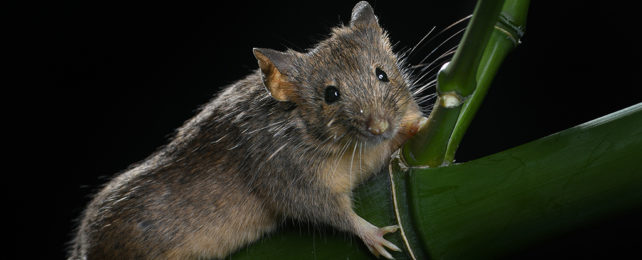Changing the number of chromosomes an animal has can take millions of generations to happen in nature through the course of evolution – and now, scientists have been able to make these same changes in lab mice in a relative blink of an eye.
The new technique using stem cells and gene editing is a major accomplishment, and one that the team is hoping will reveal more about how the rearrangement of chromosomes can influence the way that animals evolve over time.
It's in chromosomes – those strings of protein and DNA inside cells – that we find our genes, inherited from our parents and blended together to make us who we are.
For mammals like mice and us humans, chromosomes typically come paired. There are exceptions, such as in sex cells.
Unfertilized embryonic stem cells are usually the best starting place for tinkering with DNA. Lacking that additional set of chromosomes provided by a sperm cell, though, deprives the cells of an important step in negotiating which genes in which chromosomes will be marked active to do the job of building a body.
This process – called imprinting – was a stumbling block for engineers keen to restructure large chunks of the genome.
"Genomic imprinting is frequently lost, meaning the information about which genes should be active disappears in haploid embryonic stem cells, limiting their pluripotency and genetic engineering," says biologist Li-Bin Wang from the Chinese Academy of Sciences.
"We recently discovered that by deleting three imprinted regions, we could establish a stable sperm-like imprinting pattern in the cells."
Without those three naturally imprinted regions, lasting chromosome fusion was possible. In their experiments, the researchers fused two medium-sized chromosomes (4 and 5) and the two largest chromosomes (1 and 2) in two different orientations, resulting in three different arrangements.
The fusion of chromosomes 4 and 5 was the most successful in terms of the genetic code being passed on to the mice offspring, although breeding was slower than normal.
One of the 1 and 2 fusions produced no mice offspring, while the other produced mice offspring that were slower, larger, and more anxious than those from the fusion of chromosomes 4 and 5.
According to the researchers, the drops in fertility are down to how the chromosomes separate after alignment, which doesn't happen in the normal way. It shows that chromosomal rearrangement is crucial to reproductive isolation – a key part of species being able to evolve and stay separate.
"The laboratory house mouse has maintained a standard 40-chromosome karyotype – or the full picture of an organism's chromosomes – after more than 100 years of artificial breeding," says biologist Zhi-Kun Li, also from the Chinese Academy of Sciences.
"Over longer time scales, however, karyotype changes caused by chromosome rearrangements are common. Rodents have 3.2 to 3.5 rearrangements per million years, whereas primates have 1.6."
To put this into context, rare leaps in chromosomal rearrangement have helped direct the evolutionary paths of our own ancestors. Chromosomes that remain separate in gorillas, for instance, are fused into one in our human genome.
Those types of changes can occur once every few hundred millennia. While the genetic edits made here in the lab were on a relatively small scale, the signs are that they could have some dramatic effects on the animals involved.
It's still early days – this is a scientific first after all – but further down the line, there might be the opportunity to correct misaligned or malformed chromosomes in human bloodlines. We know that in individuals, chromosome fusions and relocations can lead to health problems including childhood leukemia.
"We experimentally demonstrated that the chromosomal rearrangement event is the driving force behind species evolution and important for reproductive isolation, providing a potential route for large-scale engineering of DNA in mammals," says Li.
The research has been published in Science.
